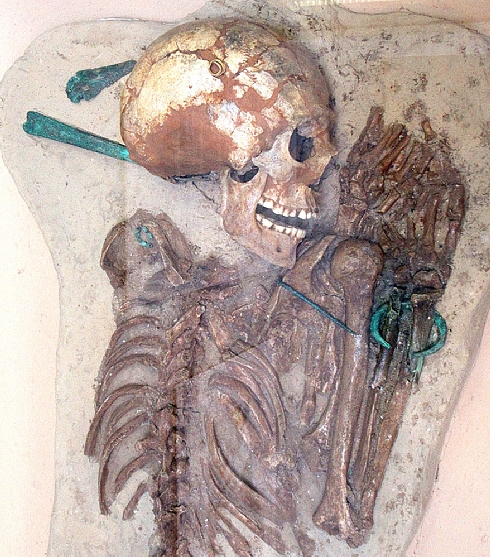Archives Helmut Föll
© Prof. Dr. Helmut
Föll
(retired)
University of Kiel; Faculty of Engineering
What's left?

From the "Gräberfeld Alteglofsheim"; early bronze age
Archives Helmut Föll© Prof. Dr. Helmut
Föll
|
|
| In Progress | |
What's left? |
|
 |
|
| Old South German, now resting in the
Regensburger Stadtmuseum. From the "Gräberfeld Alteglofsheim"; early bronze age |
|
||||||||||||||||||||||||||||||||||||||||
| Use the Menu on the left. This leaves four alternatives: | ||
| Click on "Introduction" and start at the beginning. | ||
| Click on a chapter that looks interesting and take it from there. | ||
| Click on Module Matrix, and start with whatever looks interesting. | ||
| Click on Indexlist, see which key word catches your eye, click on it and see what you get. | ||
| Go the direct way | ||
| This hyperscript used to be the script to a lecture course. The lecture course has not been given for years and now it is a kind of stand-alone "book". I have done some final editing but did not remove all allusions to the lecture course. | ||
| This hyperscript contains many peculiarities in its formatting and style of writing. This was done with some objectives in mind. Find out about this here. | ||
| There are more Hyperscripts available. If you are really curious about the Hyperscripts of "AMAT", you will find some information in the link. | ||
| Which Browser should you use? This Hyperscript is optimized for the Windows Explorer but works also quite well with Mozilla. |
||
| Other browsers might scramble equations. The link opens a "Check your Browser" page, which will show if your browser is OK. | ||
| The "print friendly" and ".pdf" options only work for the "backbone" part of the Hyperscript (consult the "Matrix of Modules" for the meaning of "backbone"). | ||
| If you click on "Project" in the menu (or here), you will find some more information about the structure of this Hyperscript and the philosophy behind it. | ||
| For example, if you like to read prefaces, you will find it there. | ||
| Many other metafiles are also accessible from there. | ||
| The remaining menu buttons (e.g. Indexlist etc.) provide automatically generated cross-linked lists which might be useful if you are looking for specific items. | ||
| The following disclaimer is required by German Law: | ||
| Hiermit distanziere ich mich
ausdrücklich von allen Inhalten aller gelinkten Seiten auf dieser Homepage
und mache mir diese Inhalte nicht zu eigen. Diese Erklärung gilt für
alle auf meinen Seiten angebrachten Links, die außerhalb meines direkten
Einflussbereiches liegen. H. Föll |
||
| Herewith I declare that I have
nothing whatsoever to do with the content of linked pages as far as they are
not my own, or not within my direct sphere of influence. H. Foell |
||
| Claimer: | ||
| It's all mine! However, I
usually do give permission to use all of it if you ask me. Address e-mails to |
||
| Impressum | ||
© H. Föll